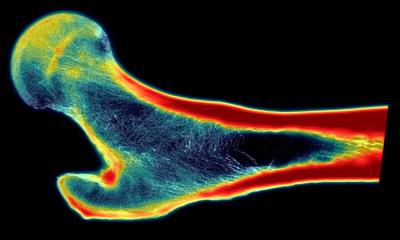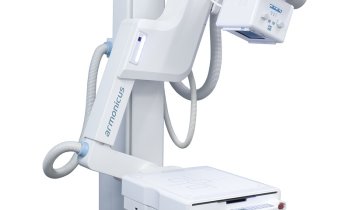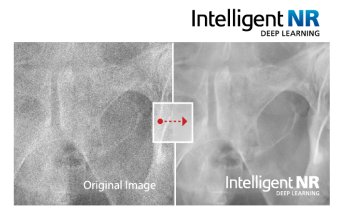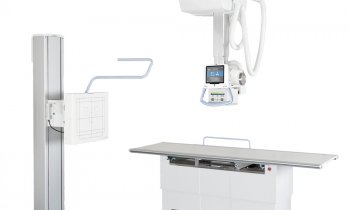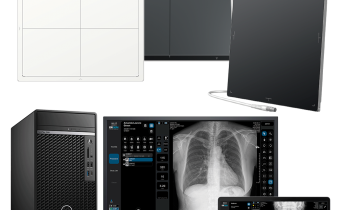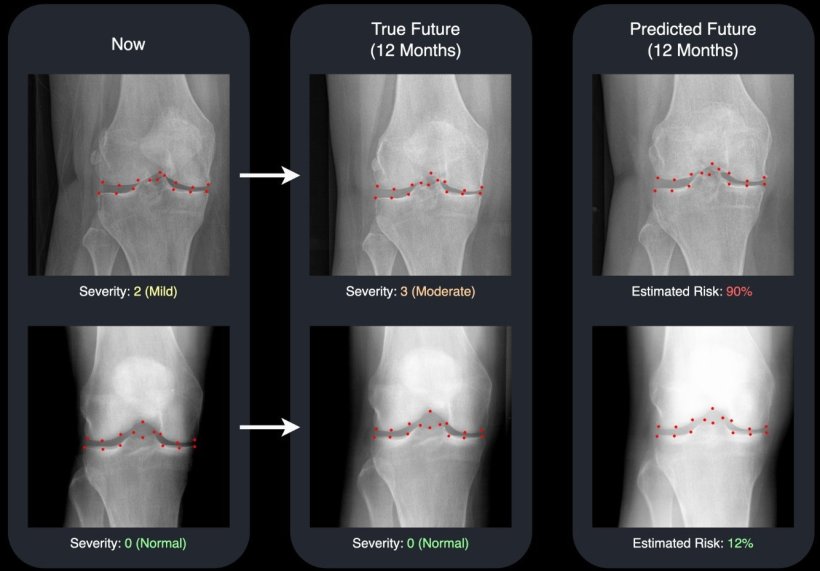
Image credit: University of Surrey
News • Risk estimation of progression in the knee
AI predicts future X-rays of osteoarthritis patients
A new study, published at the International Conference on Medical Image Computing and Computer Assisted Intervention (MICCAI 2025), details how the Surrey-developed technology uses advanced machine learning to generate a realistic “future” X-ray alongside a risk score for disease progression in the knee.
These two outputs combined can give doctors and patients a clear, visual forecast of how the condition may develop over time.
The full paper can be accessed on arXiv.
Osteoarthritis is a degenerative joint disease that affects more than 500 million people worldwide and is the leading cause of disability in older adults. Trained on nearly 50,000 knee X-rays from almost 5,000 patients – one of the largest osteoarthritis datasets in the world – the system outperforms comparable AI tools for predicting osteoarthritis progression, doing so around nine times faster and in a much more compact form. Researchers say this blend of speed, scale and accuracy could accelerate adoption in real clinical settings.
Seeing the two X-rays side by side – one from today and one for next year – is a powerful motivator. It helps doctors act sooner and gives patients a clearer picture of why sticking to their treatment plan or making lifestyle changes really matters
David Butler
David Butler, study lead from the University of Surrey’s Centre for Vision, Speech and Signal Processing (CVSSP), and Institute for People-Centred AI, said: “We’re used to medical AI tools that give a number or a prediction, but not much explanation. Our system not only predicts the likelihood of your knee getting worse – it actually shows you a realistic image of what that future knee could look like. Seeing the two X-rays side by side – one from today and one for next year – is a powerful motivator. It helps doctors act sooner and gives patients a clearer picture of why sticking to their treatment plan or making lifestyle changes really matters. We think this can be a turning point in how we communicate risk and improve osteoarthritic knee care and other related conditions.”
Using an advanced generative model, called a diffusion model, the Surrey system generates a “future” version of a patient’s knee X-ray and highlights 16 key points in the joint. These points add transparency by showing which areas the AI is monitoring for changes, making the system easier for clinicians to understand and trust.
In the future, this research could pave the way for similar tools in other chronic conditions for example, predicting lung damage in smokers or tracking heart disease progression, giving doctors and patients the same kind of visual insight and opportunity to act early. The team is also seeking partnerships to bring the technology into real-world clinical settings.
Gustavo Carneiro, Professor of AI and Machine Learning at Surrey’s Centre for Vision, Speech and Signal Processing (CVSSP), said: “Earlier AI systems could estimate the risk of osteoarthritis progression, but they were often slow, opaque and limited to numbers rather than clear images. Our approach takes a big step forward by generating realistic future X-rays quickly and by pinpointing the areas of the joint most likely to change. That extra visibility helps clinicians identify high-risk patients sooner and personalise their care in ways that were not previously practical.”
Source: University of Surey
15.10.2025



